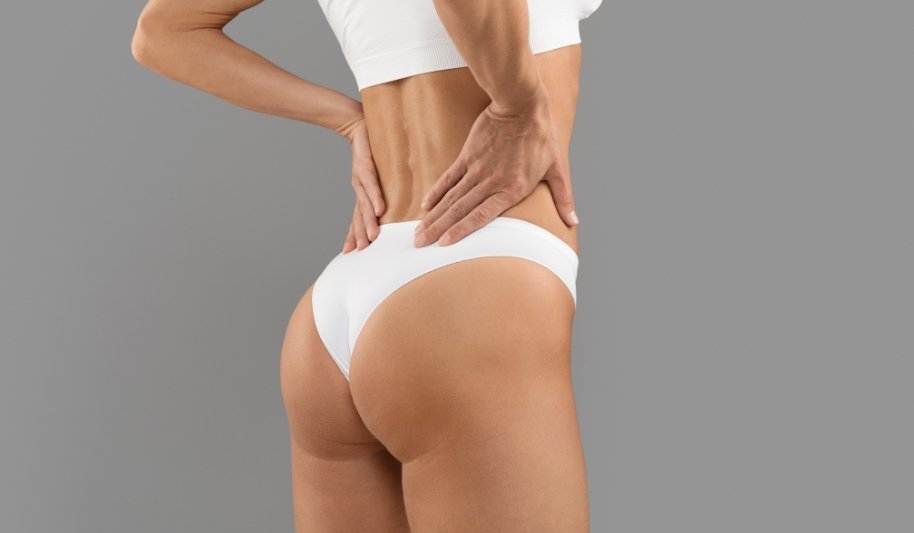Liposuction Results Week By Week
Liposuction is a popular cosmetic procedure that aims to remove stubborn fat from different areas of the body. But what can you expect when it comes to liposuction results week by week? Well, here's an interesting fact: After the first week of liposuction, you might notice some swelling and bruising in the treated areas. This is completely normal and can be managed with proper care and follow-up appointments with your surgeon.
Now, let's delve into the significant aspects of liposuction results week by week. Liposuction has been around for many years, with its origins dating back to the 1920s. Over time, advancements in technology and techniques have made liposuction safer and more effective. In fact, studies have shown that liposuction can lead to an average reduction of 2-5 inches in the treated areas. This impressive statistic showcases the potential of liposuction as a solution for those struggling with stubborn fat that doesn't seem to go away through diet and exercise alone.
The Progress of Liposuction Results Week By Week
When considering liposuction, many individuals wonder what kind of results they can expect and how the healing process will unfold. Understanding the progress of liposuction results week by week can help manage expectations and ensure a smooth recovery. From the immediate post-surgery effects to the long-term outcome, each week brings changes and improvements. Let's explore the journey of liposuction results in detail.
Week 1: The Immediate Post-Surgery Period
The first week after liposuction is crucial for recovery and initial results. Immediately after the procedure, patients can expect swelling, bruising, and tenderness in the treated areas. Compression garments are worn to control swelling and support the healing process. Pain and discomfort can be managed with prescribed medications.
During this week, it's important to follow all post-operative instructions provided by the surgeon. This includes keeping the incisions clean and dry, avoiding strenuous activities, and attending follow-up appointments. The initial results may be obscured by swelling, but some improvements can already be noticed. The treated areas will appear smaller, and patients may experience increased mobility and decreased discomfort compared to pre-surgery.
By the end of the first week, the swelling will start to subside, and patients may begin to see more noticeable changes in the treated areas. However, it's important to remember that full results can take several months to develop as the body continues to heal and adjust.
The Role of Massage and Lymphatic Drainage
During the first week, some surgeons may recommend post-operative massage or lymphatic drainage therapy to help reduce swelling, promote circulation, and aid in the healing process. These manual techniques can help optimize the liposuction results by enhancing the body's natural lymphatic system and facilitating the removal of excess fluid and waste.
Massage and lymphatic drainage should only be performed by trained professionals under the guidance of the surgeon. It's essential to follow the surgeon's recommendations and avoid self-massage or any techniques that may cause harm or disrupt the healing process.
By incorporating massage or lymphatic drainage during the first week of recovery, patients may experience faster healing, reduced swelling, and potentially enhanced long-term results.
Week 2-4: Continuing Recovery and Visible Improvements
During the second to fourth week, the swelling will gradually decrease, and patients will notice more visible improvements in the treated areas. The bruising will also begin to fade, revealing a smoother contour.
At this stage, most patients can resume light exercise and gradually increase their activity level under the guidance of their surgeon. It's important to continue wearing the compression garments as instructed to support the healing process and optimize the final results.
As the body heals, the treated areas will continue to reshape, and the skin will gradually tighten to accommodate the new contours. Patients may experience some mild itching and discomfort, which can be managed with over-the-counter medications or prescribed ointments.
Maintaining a Healthy Lifestyle
During weeks 2-4, it's crucial to maintain a healthy lifestyle to support the recovery process and optimize liposuction results. This includes eating a balanced diet, staying hydrated, and avoiding smoking and excessive alcohol consumption.
Regular exercise can also help improve blood circulation, enhance lymphatic drainage, and contribute to overall well-being. However, it's important to consult the surgeon before engaging in any strenuous activities or targeted exercises that may impact the treated areas.
By adopting a healthy lifestyle and following post-operative guidelines, patients can maximize the improvements achieved through liposuction and maintain long-lasting results.
Week 6-12: Continued Progress and Final Outcome
Between weeks 6 and 12, the majority of the swelling will subside, and patients will continue to see the final results taking shape. The treated areas will appear more contoured and well-defined, with improved proportion.
By this stage, patients can usually return to their normal activities, including more intense workouts and physical activities. The incisions will continue to heal and fade, becoming less noticeable over time.
It's important to keep in mind that everyone's recovery timeline may vary, and the rate at which results become evident can depend on individual factors such as overall health, age, and the extent of the liposuction procedure.
Long-Term Results and Maintenance
After the initial recovery period, maintaining a healthy and active lifestyle can help sustain the liposuction results in the long term. Regular exercise, a well-balanced diet, and hydration are key factors in maintaining the new contour and preventing weight gain in untreated areas.
It's important to note that liposuction is not a substitute for weight loss or a solution for obesity. It is intended to reshape specific areas of the body and should be complemented by a healthy lifestyle for optimal results.
While the results of liposuction are permanent, it's essential to maintain realistic expectations. Understanding that the body will continue to age and undergo natural changes can help individuals appreciate the ongoing benefits of liposuction while embracing a positive body image.
Exploring the Emotional Journey of Liposuction Results Week By Week
Liposuction not only affects the physical appearance but also has a significant impact on an individual's emotional well-being. The emotional journey of liposuction results week by week is an important aspect to understand and discuss. Let's explore how the emotional journey unfolds throughout the various stages of liposuction recovery.
Week 1: Managing Expectations and Recovery Discomfort
During the first week, it's common for patients to experience a range of emotions. While there is excitement about the anticipated results, there may also be anxiety or discomfort due to the immediate post-surgery effects, such as swelling and bruising.
It's important for patients to remember that the initial swelling can obscure the full outcome of the liposuction procedure. Managing expectations and understanding that the final results will take time to emerge can help alleviate any emotional distress experienced during this stage.
It's also crucial to lean on a strong support system during the early recovery period. Having loved ones or joining support groups where individuals can share their experiences can provide emotional comfort and reassurance.
Positive Self-Talk and Visualization Techniques
Engaging in positive self-talk and visualization techniques can be beneficial during the emotional journey of liposuction recovery. Reminding oneself of the reasons for undergoing the procedure and envisioning the desired outcome can help maintain a positive mindset throughout the healing process.
Practicing self-care, such as listening to soothing music, practicing deep breathing exercises, and engaging in activities that promote relaxation, can also help alleviate any emotional stress or discomfort during the first week.
By focusing on self-care and maintaining a positive outlook, patients can navigate the emotional journey with greater ease.
Week 2-4: Emotional Resilience and Visible Improvements
As the swelling subsides and visible improvements become more apparent, patients often experience a boost in emotional well-being during weeks 2 to 4 of the recovery period. The initial discomfort and anxieties start to fade, and individuals feel more optimistic about the final outcome.
It's important to embrace this positive mindset and celebrate the progress made during this stage. Engaging in activities that boost confidence and self-esteem, such as wearing clothes that showcase the new contours or engaging in social events, can further enhance the emotional journey.
It's also important to remember that the emotional journey during liposuction recovery is unique to each individual. Some may experience emotional highs while others may have moments of doubt or impatience. Maintaining open communication with the surgeon and support system can provide reassurance and guidance, helping individuals stay on track mentally and emotionally.
Week 6-12: Embracing a Positive Body Image
Between weeks 6 and 12, when the final results of the liposuction procedure become more evident, individuals often experience a sense of accomplishment and improved body image. Embracing these positive changes and recognizing the effort invested in the journey can have a lasting impact on emotional well-being.
It's common to feel more self-assured, confident, and comfortable in one's own skin after experiencing the transformative effects of liposuction. This emotional transformation can extend beyond the physical aspect and positively impact other areas of life, such as personal relationships and overall self-esteem.
However, it's important to note that while liposuction can enhance one's appearance and emotional well-being, it cannot address underlying mental health issues. If individuals experience persistent emotional distress, it's essential to seek professional help from a mental health practitioner.
The emotional journey of liposuction results week by week is a complex and individual experience. By acknowledging and addressing emotions throughout the recovery process, individuals can fully appreciate and enjoy the emotional benefits that accompany the physical changes.
Conclusion:
The journey of liposuction results week by week encompasses both physical and emotional changes. From the immediate post-surgery period to the long-term outcome, each week brings progress and transformation. Understanding the timeline of healing and emotional resilience allows individuals to navigate the recovery process with confidence and optimism. By following post-operative guidelines, maintaining a healthy lifestyle, and embracing a positive mindset, patients can reap the full benefits of liposuction and enjoy lasting results.
Frequently Asked Questions
When undergoing a liposuction procedure, patients often wonder about the results they can expect, and how they will progress over time. Here are some common questions regarding liposuction results week by week:
1. What can I expect in the first week after liposuction?
In the first week after liposuction, it is normal to experience swelling, bruising, and some discomfort in the treated areas. The swelling may be more pronounced in the first few days, gradually improving as the week progresses. It is important to follow your surgeon's post-operative instructions and wear any compression garments provided. During this week, you can expect to see some initial improvement in your body contours, although the full results will not be visible yet.
It is essential to rest and avoid strenuous activities during this time to aid in the healing process and promote optimal results.
2. What changes can I expect in the second week after liposuction?
By the second week, the swelling and bruising should continue to decrease, although it may still be present to some extent. Any discomfort should also lessen significantly. It is common for patients to start noticing more visible improvements in their body contours during this week. However, it is important to remember that individual healing varies, and results may differ from person to person.
It is still crucial to follow your surgeon's instructions and wear any compression garments or take any prescribed medications to aid in the healing process.
3. What progress can I expect in the third week after liposuction?
In the third week, most of the swelling and bruising should have subsided, with further visible improvement in body contours. As the body continues to heal, the treated areas may feel less tender or sensitive. Patients often experience increased satisfaction with their appearance during this stage of recovery.
It is important to maintain a healthy lifestyle and continue following your surgeon's advice for optimal results.
4. How will my liposuction results progress in the fourth to sixth week?
During the fourth to sixth week, most patients will notice a significant reduction in swelling and an enhanced improvement in body contours. The treated areas will continue to settle, and any residual bruising or discomfort should be minimal. At this stage, you can expect to see a closer approximation of the final results, although it is essential to remember that complete healing can take several months.
It is recommended to maintain a healthy diet, exercise regularly, and follow any post-operative care instructions provided by your surgeon to optimize your liposuction results.
5. When will I see the final results of my liposuction procedure?
The final results of liposuction can typically be seen around three to six months after the procedure. It takes time for the body to fully heal and for any remaining swelling to completely subside. Individual healing and the extent of the procedure will influence the timeline for achieving the desired outcome. Following a healthy lifestyle, including regular exercise and a balanced diet, can help maintain the results of liposuction in the long term.
It is essential to consult with your surgeon for personalized advice on your specific recovery timeline.





